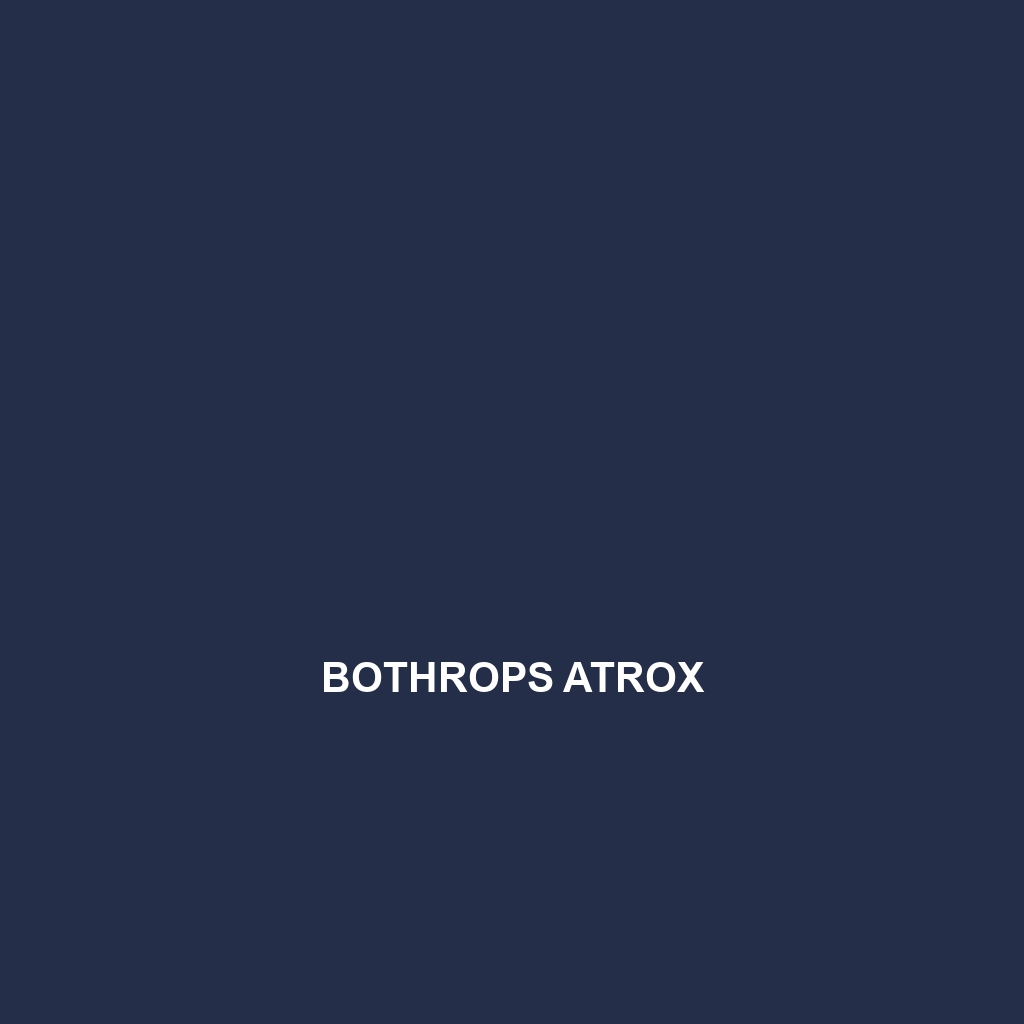Species Description of Bothrops atrox
Common Name: Bothrops atrox
Scientific Name: Bothrops atrox
Habitat: Bothrops atrox, commonly known as the fer-de-lance, is primarily found in the tropical rainforests of Central and South America. Its range includes countries such as Colombia, Venezuela, Brazil, Ecuador, and parts of Panama and Costa Rica. This species thrives in humid environments, occupying lowland areas, semi-deciduous forests, and sometimes agricultural edges and secondary growth areas. The adaptability of Bothrops atrox to various habitats makes it one of the more widely distributed pit viper species in its range.
Physical Characteristics: Bothrops atrox typically exhibits a robust body structure, usually measuring between 2 to 5 feet in length. This species is characterized by its distinctive coloration, which tends to feature a blend of brown, olive, and grayish tones, adorned with bold dark markings along its back. Its triangular head and slit-like pupils contribute to its unique physical identity. The rough, keeled scales of Bothrops atrox provide excellent camouflage among the forest floor’s leaf litter, enhancing its ability to ambush prey.
Behavior: Bothrops atrox is primarily a nocturnal species, exhibiting significant activity at night when it hunts for food. During the daytime, this venomous snake prefers to remain hidden under leaf litter or logs, which provides security from predators and human threats. Known for its aggressive nature when provoked, the fer-de-lance displays warning behaviors, including hissing and coiling. Its potent venom is used primarily for hunting but can also serve as an excellent defense mechanism against potential threats.
Diet: The diet of Bothrops atrox consists mainly of small mammals, birds, and amphibians. Its predatory skills involve ambush tactics, waiting for unsuspecting prey to come within striking distance. Bothrops atrox employs its swift speed and retractable fangs to deliver venom that immobilizes prey efficiently. Due to its varied diet, this snake plays a crucial role in controlling rodent populations in its habitat, contributing to the ecological balance.
Reproduction: Bothrops atrox exhibits viviparity, meaning it gives birth to live young rather than laying eggs. The breeding season typically occurs during the rainy months. After a gestation period of approximately six to eight months, a female can give birth to anywhere between 10 to 30 neonates, which are fully functional and capable of hunting upon birth. This reproductive strategy allows for higher survival rates among the offspring in their native environment.
Conservation Status: The conservation status of Bothrops atrox is currently listed as “Least Concern” by the IUCN, though local populations may face threats from habitat destruction and hunting. As human encroachment into their natural habitats increases, ongoing monitoring of population levels and habitat conservation is essential to ensure their survival.
Interesting Facts: Bothrops atrox is known for its highly potent venom, which is utilized in medical research for developing antivenoms and studying pain management. Interestingly, this species exhibits a notable ability to regulate its body temperature during extreme weather conditions, allowing it to thrive in diverse environments. Additionally, its striking appearance and reputation have made it a subject of fascination in various cultures, symbolizing both danger and beauty in the biodiversity of the Americas.
Role in Ecosystem: As a top predator in its tropical ecosystem, Bothrops atrox plays a vital role in maintaining population control of small mammals and birds. Its presence contributes to the overall health of the environment, ensuring the balance of species interactions and assisting in nutrient cycling through predation. The decline of fer-de-lance populations could lead to an increase in rodent numbers, emphasizing the importance of their ecological role and the need for conservation efforts.
